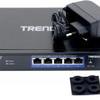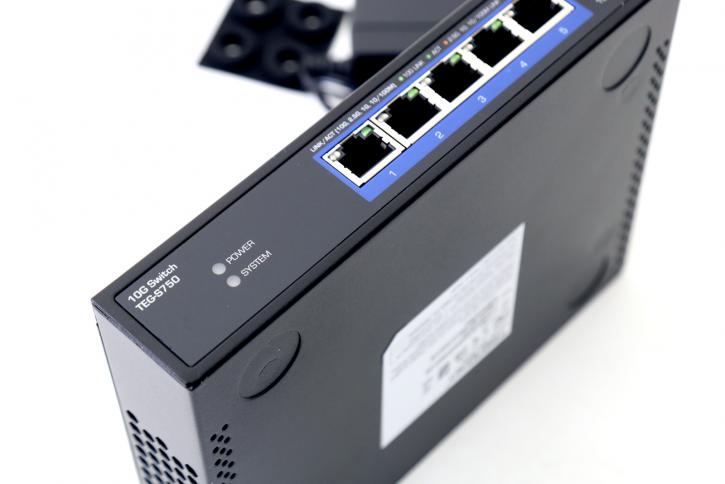Bits, Frames, and Packets
Bits, Frames, and Packets
Let's take a little overview of network equipment. At the bottom of the network food chain, you get the repeater. It does nothing but takes the bits, boost their signal, and send them on their way. Repeaters were the standard way to get around the 100 meter limit for cable. Just above that is the hub, similar to a repeater, and just as dumb, it generally just has lots of ports. Hubs don't do anything to segregate data and threats all the computers attached to it as a single broadcast domain. That is a hub forwards all packets to all ports and leaves it up to the nodes to decide if the packet was for them. Not the most efficient way to network, but it works well for smaller networks.
Second from the top is the switch, which is what the TEG-S750 is. Switches treat each port as an individual broadcast domain, sending data (frames) only to the port that needs it, thus enhancing speed and efficiency. This level of intelligence requires that a switch have some buffer memory and have a little processing be done with each packet that goes in and out. At the top of the network, food chain is the router. Routers can contain switches. It is the big daddy and uber guru of networks, as it works with the highest level of intelligence, by protocol. Switches are generally a good upgrade if you have lots of hubs and want to extend the life of your network and kick up the speed.
5-Port Unmanaged 10G Switch TEG-S750 (Version v1.0R)
- 5 x 10GBASE-T ports
- Supports IEEE 802.3bz 2.5G/5G-BASE-T over cat5e cabling (or better)
- Supports IEEE 802.3an 10G-BASE-T over cat6a cabling (or better)
- Backward compatible with 100Mbps/1Gbps/2.5Gbps/5Gbps/10Gbps devices
- 100 Gbps switching capacity
- Fanless design eliminates noise
- Wall mountable for installation flexibility
The TEG-S750 has 5 full-duplex 100/1000/2500/5000/10000 ports for its connections, so you need to double that up. Most switch crossbars (the backplane) run in the gigahertz range, so 100 Gbps isn't too surprising. But it is surprising to see that Trendnet isn't compromising on speed for the sake of costs. as 100 Gbs of crossbar bandwidth certainly does work out to the full-duplex 20000 Mbps for each port (10G each way).


